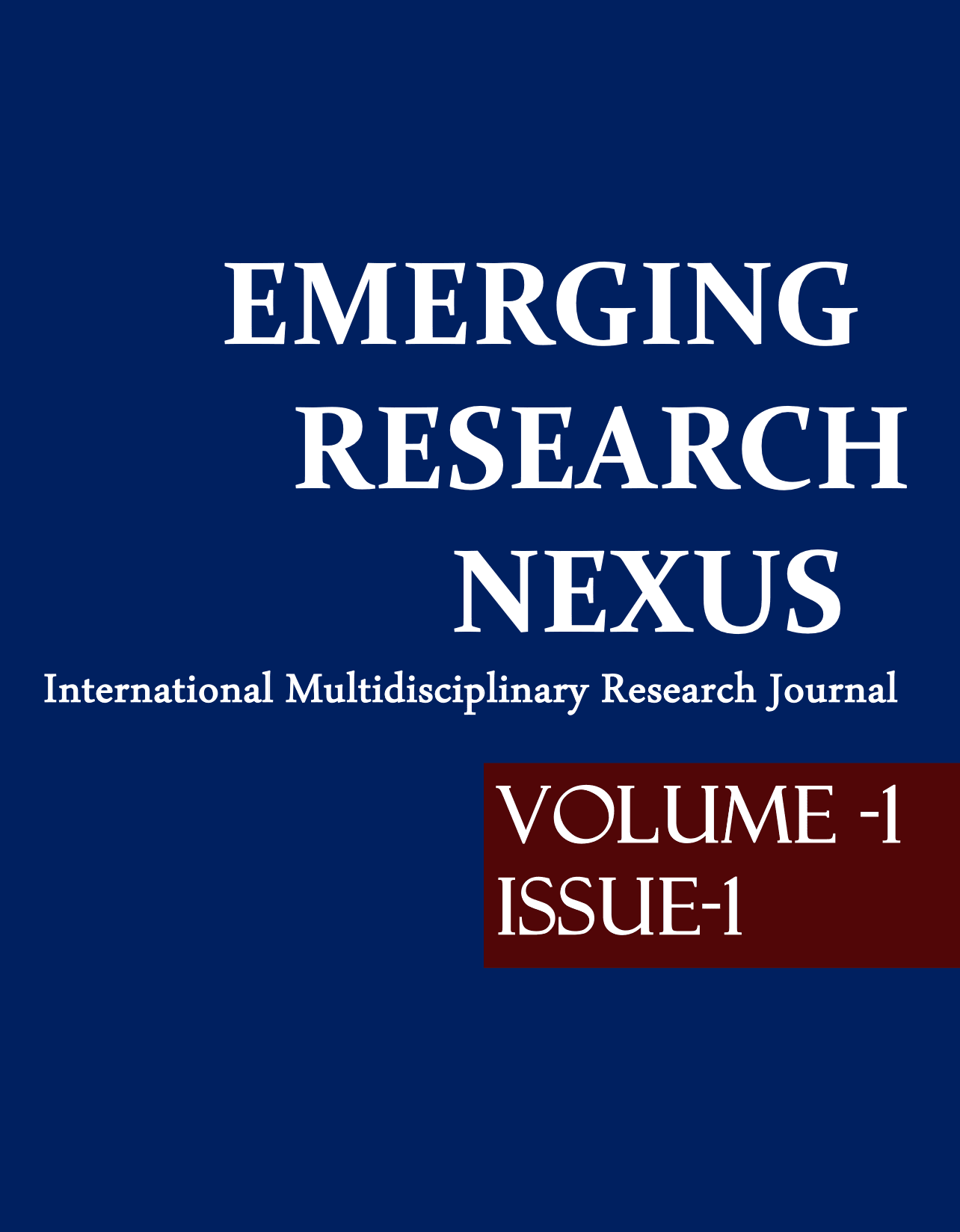Fungal Antagonists Mode of Action
DOI:
https://doi.org/10.70788/ern.1.1.2024.5Keywords:
Antagonists, Biocontrol, Eradication, Antibiosis, CompetitionAbstract
Fungal plant pathogens are the primary factors responsible for significant losses to agricultural products annually. The predominant method of controlling fungal diseases has been the use of fungicides; however, there is a global shift towards reducing their application. Biocontrol agents offer a viable alternative to chemical control for the eradication of fungal diseases. Throughout their life cycle, plants interact with diverse pathogens that impact their health through various mechanisms. Fungal biocontrol agents employ multiple modes of action, including antibiosis, competition for nutrients and space, and mycoparasitism, with the specific mechanism varying according to the pathogen-host combination. While competition for space and nutrients is the primary mode of action for fungi, bacteria often produce antibiotics. These mechanisms may act consecutively, making it challenging to identify the association with specific antifungal actions. This summary provides an overview of the modes of action of fungal antagonists.
References
• Agrios, N. A., (1998). Plant Pathology.3rd Edition., Academic press, USA., pp:220-222
• Arrebola, E., Jacobs, R., and Korsten, L. (2010). Iturin A is the principal inhibitor in the biocontrol activity of Bacillus amyloliquefaciens PPCB004 against postharvest fungal pathogens. Journal of Applied Microbiology, 108, 386–395.
• Bankhead, S. B., Landa, B. B., Lutton, E., Weller, D. M., and Gardener, B. B. (2004). Minimal change in rhizosphere population structure following root colonization by wild type and transgenic biocontrol strains. FEMS Microb. Ecol., 49: 307-318.
• Bull, C., Shetty, K., & Subbarao, K. (2002). Interactions between myxobacteria, plant pathogenic fungi, and biocontrol agents. Plant disease, 86(8), 889-896.
• Berg, G., Krechel, A., Ditz, M., Sikora, R. A., Ulrich, A., and Hallmann, J. (2005). Endophytic and ectophytic potato associated bacterial communities differ in structure and antagonistic function against plant pathogenic fungi. FEMS Microbe. Ecol., 51: 215-299
• Chanchaichaovivat, A., Panijpan, B., and Ruenwongsa, P. (2008). Yeast biocontrol of a fungal plant disease: a model for studying organism interrelationships. Journal of biological education, 43(1), 36-40.
• Chanchaichaovivat, A., Panijpan, B., and Ruenwongsa, P. (2008). Putative mode of action of Pichia guilliermondii strain R13 in controlling chilli anthracnose after harvest. Biological Control, 47, 207–215.
• Chisholm, S. T., Coaker, G., Day, B., and Staskawicz, B. J. (2006). Host -microbe interactions: Shaping the evolution of the plant immune response. Cell, 124; 803-814
• Cook, R. (1993). Making greater use of microbial inoculants in agriculture. Annual review of phytopathology, 31, 53-80.
• Cortes, C., Gutierrez, A., Olmedo, V., Inbar, J., Chet, I., and Herrera-Estrella, A. (1998). The expression of genes involved in parasitism by Trichoderma harzianum is triggered by a diffusible factor. Molecular and General Genetics MGG, 260, 218-225.
• Elad, Y., Chet, I., Boyle, B., and Henis, Y. (1983). Parasitism of Trichoderma spp. on Rhizoctonia solani and Sclerotium rolfsii-scanning electron microscopy and fluorescence microscopy. Phytopathology 73:85–88.
• Elad, Y., Lisfshitz, R., and Baker, R. (1985). Enzymatic activity of the mycoparasite Pythium nunn during interaction with host and non-host fungi. Physiol. Plant Pathology. 27:131–148.
• Fitter, A., and Garbaye, J. (1994). Interactions between mycorrhizal fungi and other soil organisms. Plant and soil, 159, 123-132.
• Hoitink, H and Boehm, M. (1999). Biocontrol within the context of soil microbial communities: Asubstrate-dependent phenomenon. Ann. Rev. Phytopathology., 37: 427- 446.
• Katska, V., (1994). Inter-relationship between vesicular-arbuscular mycorrhiza and rhizosphere microflora in apple replant disease. Biol. Plant, 36: 99-104.
• Keel, C., Voisard, C., Berling, C. H., Kahir, G., and Defago, G. (1989). Iron sufficiency is a prerequisite for suppression of tobacco black root rot by Pseudomonas fluoresces strain CHA0 under gnotobiotic condition. Phytopathology, 79: 584-589.
• Lo, C., Nelson, E., and Harman, G. (1997). Biological control of Pythium, Rhizoctonia and Sclerotinia infected diseases of turfgrass with Trichoderma harzianum. Phytopathology, 84, 1372-1379.
• Magan, N. (2001). Physiological approaches to improving the ecological fitness of fungal biocontrol agents Fungi as biocontrol agents: progress, problems and potential (pp. 239- 251): CABI Publishing Wallingford UK.
• Sanchez, V., Rebolledo, O., Picaso, R. M., Cardenas, E., Cordova, J., Gonzalez, O., and Samuels, G. J. (2007). In vitro antagonism of Thielaviopsis paradoxa by Trichoderma longibrachiatum. Mycopathologia, 163(1), 49-58.
• Spadaro, D., and Gullino, M. L. (2005). Improving the efficacy of biocontrol agents against soilborne pathogens. Crop protection, 24(7), 601-613.
• Tu, J. C. 1984. Mycoparasitism by Coniothyrium minitans and its effects on sclerotia germination. Phytopathology. Z. 109: 261–268.
• Thomashow, L. S., Bonsall, R. F., and Weller, D. M. (2002). Antibiotic Production by Soil and Rhizosphere Microbes in situ.2nd Edition., ASM Press, Washington DC., pp: 638-647
• Tampakaki, A. P., Hatziloukas, E., and Panopoulos, N. J. (2009). Plant pathogens, bacteria. Encyclopedia of Microbiology Third Edition, 655–677.
• Vinale, F., Sivasithamparam, K., Ghisalberti, E., Marra, R., Woo, S. and Lorito, M. (2008). Trichoderma–plant–pathogen interactions. Soil Biol. Biochem. 40:1–10.
• Yu, T., Wang, L., Yin, Y., Wang, Y., and Zheng, X. (2008). Effect of chitin on the antagonistic activity of Cryptococcus laurentii against Penicillium expansum in pear fruit. International Journal of Food Microbiology, 122(1-2), 44-48





